STARS IN THE HAIR
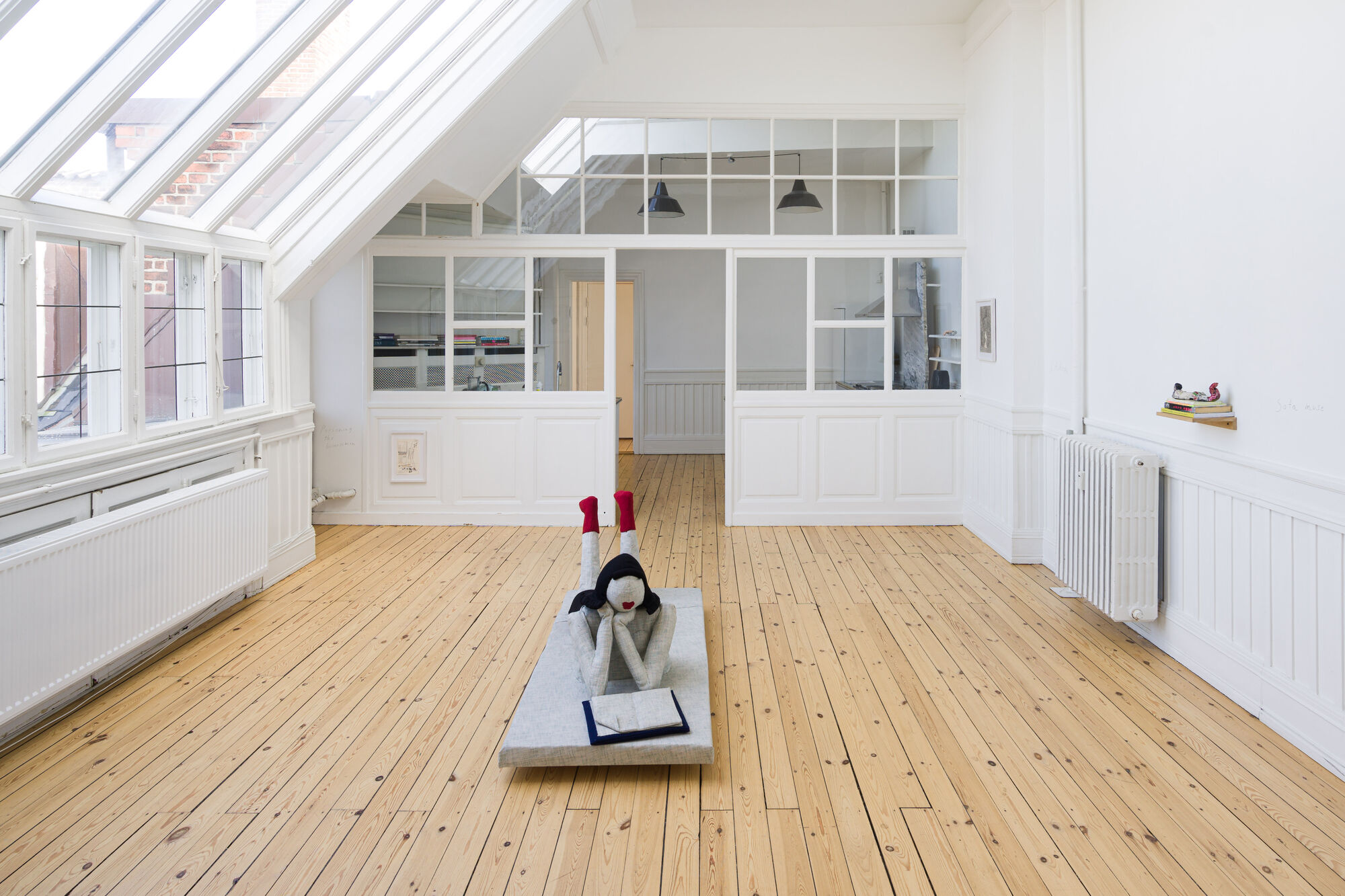
(What is dressing up if undressing is the truth)
I worked on some school stuff, living in Paris. Every morning I walked down Rue Mazarine, ending at the left bank of the river Seine to a library that I’d figured was a good place to work. Entering french old library buildings is not just a piece of cake! I had to show my passport, my wallet and my papers - it took me about a week just to gain access to one of a hundred desks with a green lamp on, in this space called public. In fact it was the oldest public library in France. At least that’s what they told me when a whole film crew entered the silent reading hall to do a feature for the national television, asking me to do an interview. Me? For obvious reasons I guessed looking around. I got my knee high stockings on, sitting at my desk. What are you reading, they asked, handing over the microphone, camera on.
So I told them, pointing at the little book next to my computer.
Michel Foucault. Histoire de la sexualité.
I whispered (in french!) not to disturb my surroundings.
Why did I read that book?
Living in Paris I got obsessed with perfume and handbags. Everyday I passed luxury stores full of accessories and massive prize tags. Never did I buy anything. Just looking
If not my grandmother had just passed away and left me a good handful of money I would never have afforded staying In Paris to work on my thesis.
That was why I read Foucault. I studied art history and my boyfriend had recommended it to me (he studied art history as well)
For the people who don’t know this book - it’s about sexuality. You have probably already guessed : Histoire de la sexualité
Its not about erotiscm or sex as such but more about how western, capitalist societies has drawn upon christian tradition of confession when organizing and institutionalizing ways of speaking about sexuality.
I read it because:
I was criticizing a well known sprung from the 70es book Kvinde Kend din Krop and it’s very broad use of representation of the naked body: both conceptually and literary speaking. Every ten year the book gets re-launched to match the tendencies of today. Going through the pages of the latest version I understood that the idea of being naked really manifested itself as something ‘closer to the truth’. A very well established idea in western thinking, institutionalized within art history, philosophy as in the everyday language. Think about how we use the phrase “the naked truth”. If the truth is naked we have to undress to reach it. A strangely mainstream desire to know what’s behind. An absurd thing when talking about art and visuality, carried much by stagings, personas, and appearances.
Stars in the hair – Exhibition text by Mai Dengsøe
My grandmother, she was never naked. At least not in front of me. Was she still true in my eyes? Yes. Very much. Always dressed in hats, warm coats, high heel leather boots and gloves. Going grocery shopping she even wrapped her handbag in a terry brown towel to hide away her jewelry that she kept down there in her bag. What effort she did! not to get robbed.
Why do I think about all this in relation to Anna Stahns work?
There is no such thing as a naked body in Anna Stahn’s exhibition Stars in the hair. On the contrary there is hair, lipstick, nails, oysters, dresses, shoes, books, letters and a psychedelic eyeless doll lying on a daybed reading.
When going through Stahn’s exhibition you may realize that she is a material girl. An artist mostly concerned with all that superficial stuff such as clothing, tight scarfs, pearls, color, textile, clay and paper. Stahn works in plural and it is by creating situations, vibes and through her staging of crumpled awkwardness of being in an inescapable and material world, that she, with humoristic sensibility mimic both the casual and the absurdity of understanding any kind of interior as social and the body - just another thing to furnish around with.
Entering the first room, the hallway of Stars in the hairyou’ll find a wallpaper of shoes. In the next room; a hand sewn fetish doll in furniture fabric, next to the doll a bookshelf full of books with notes and underlines. In the kitchen oysters are trying to escape the plate that they’ve been served on. Walk from the kitchen through a hallway decorated with portraits that are like posters, diary drawings or napkins, leading to a room where Stahn has created her own little architecture of modernist looking houses and handbags. In the last room (the balcony room) a light table decked with love letters, wigs, pencil cases, findings, haunted heirlooms, and little useless tools for getting ready to enter the world through a hair shaped curtain on the balcony door.
Stahn has an archiving (and literary) approach to the work - stacking, pilling all the traces that she herself has created to detect vanity and trough vanity, also the intimate.
The whole exhibition is like a sculptural moodboard. The figures, the sculpting, the teeny-tiny feminine figurines are both stilted and fragile at the same time. Stahn draws a very physical universe, materializing feelings spanning pettiness, humiliation, nervous- and awkwardness, lust, desire, greatness, and the power of being dressed in just the right way not to get caught.
Mai Dengsøe
Art historian and curator
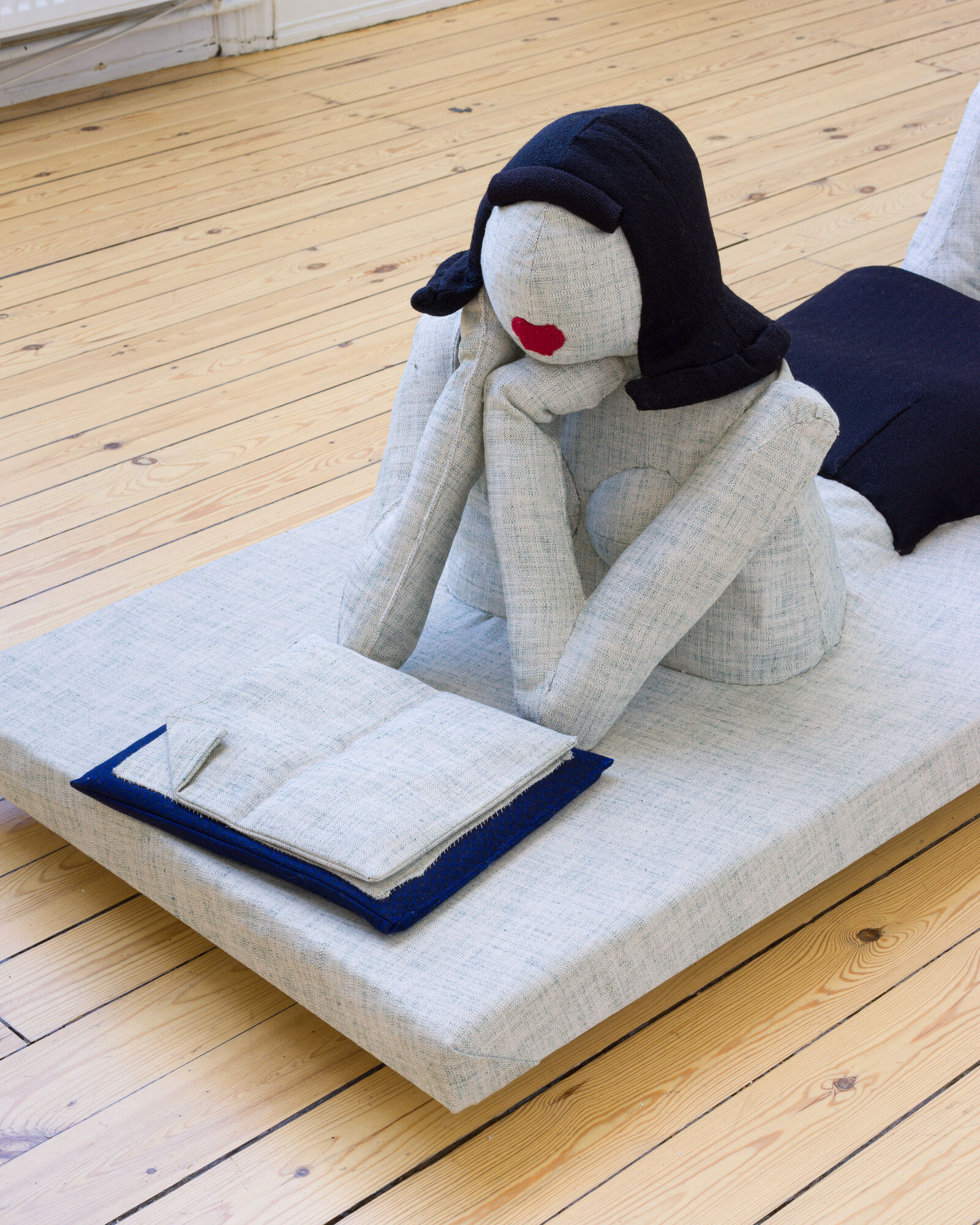
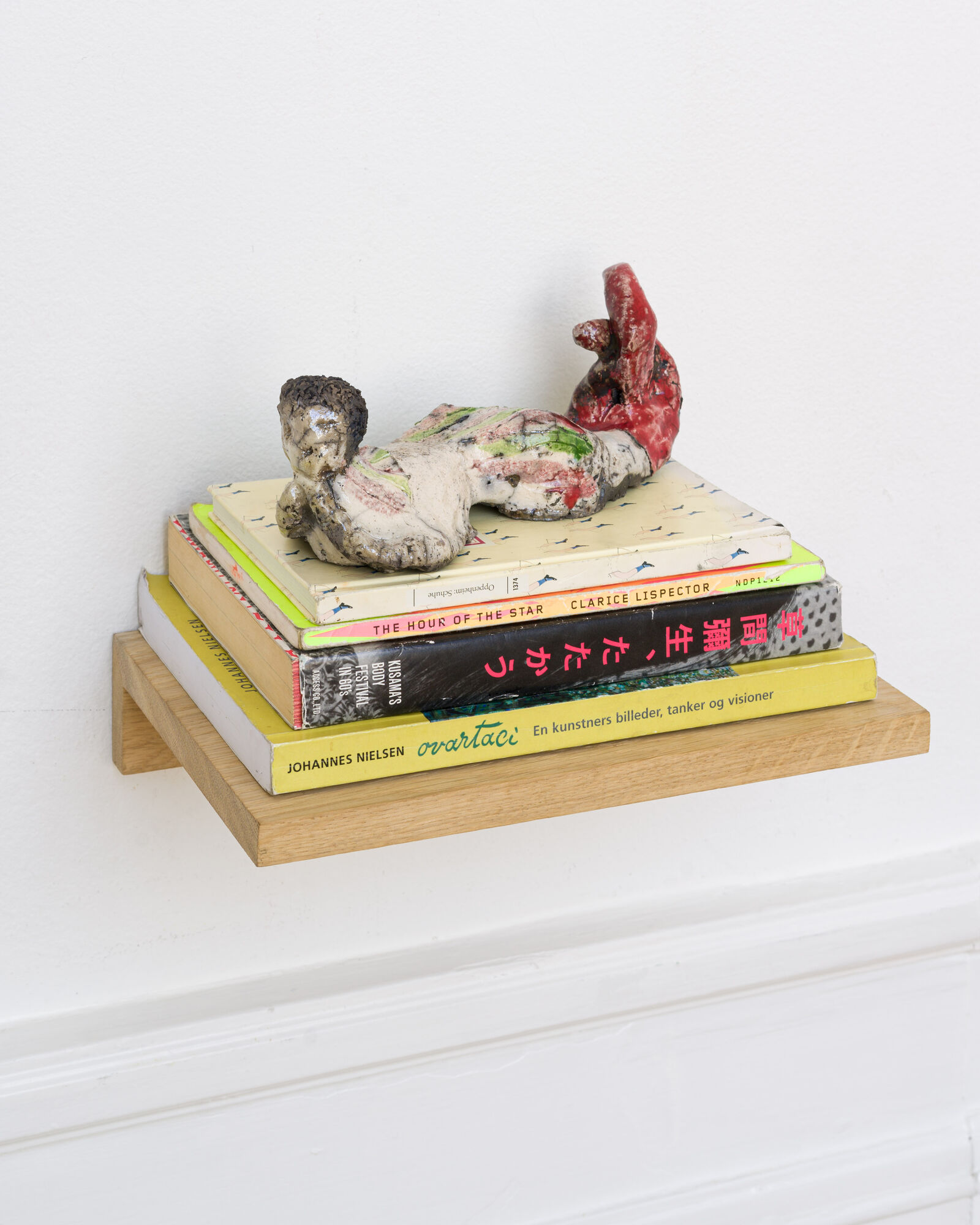
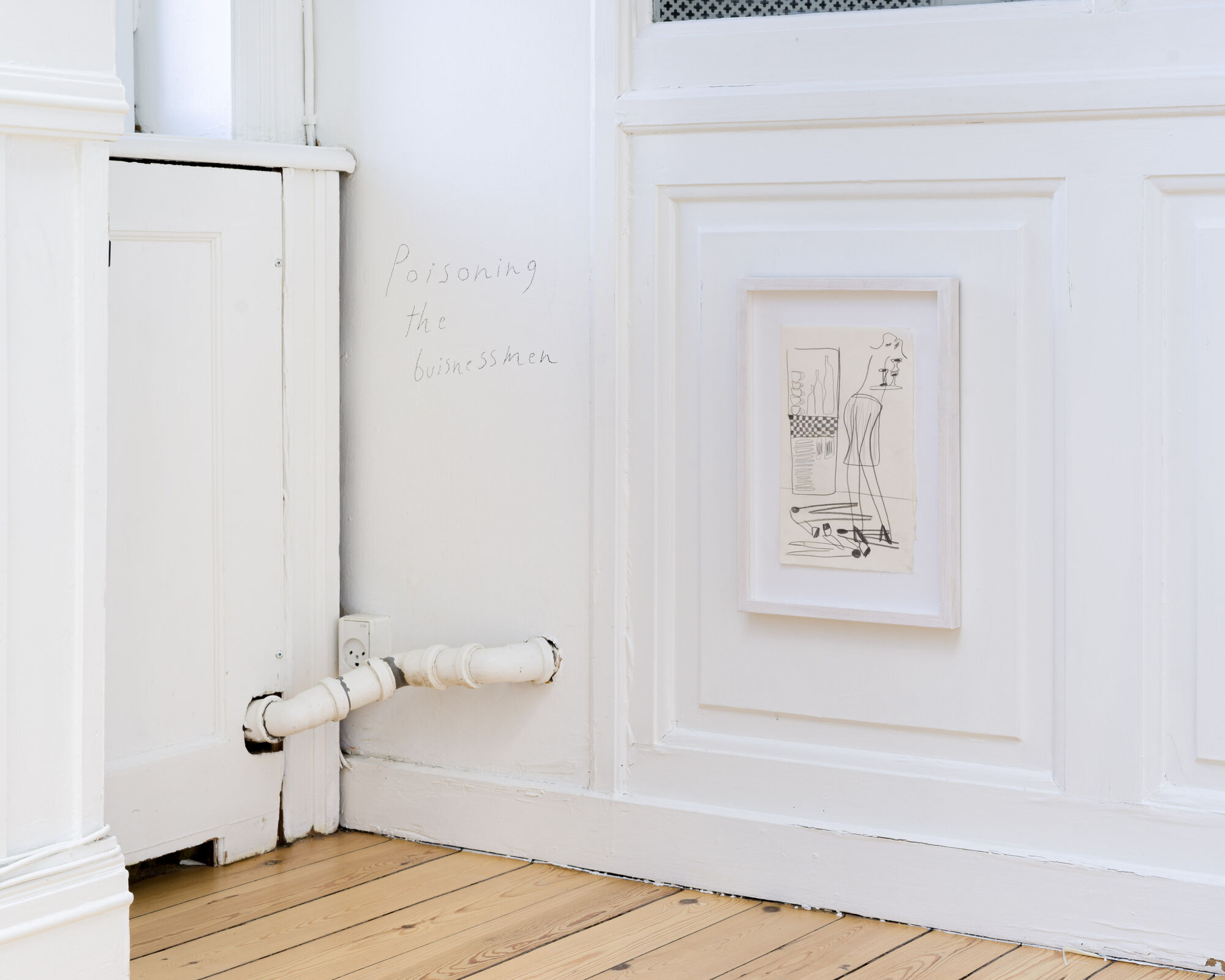

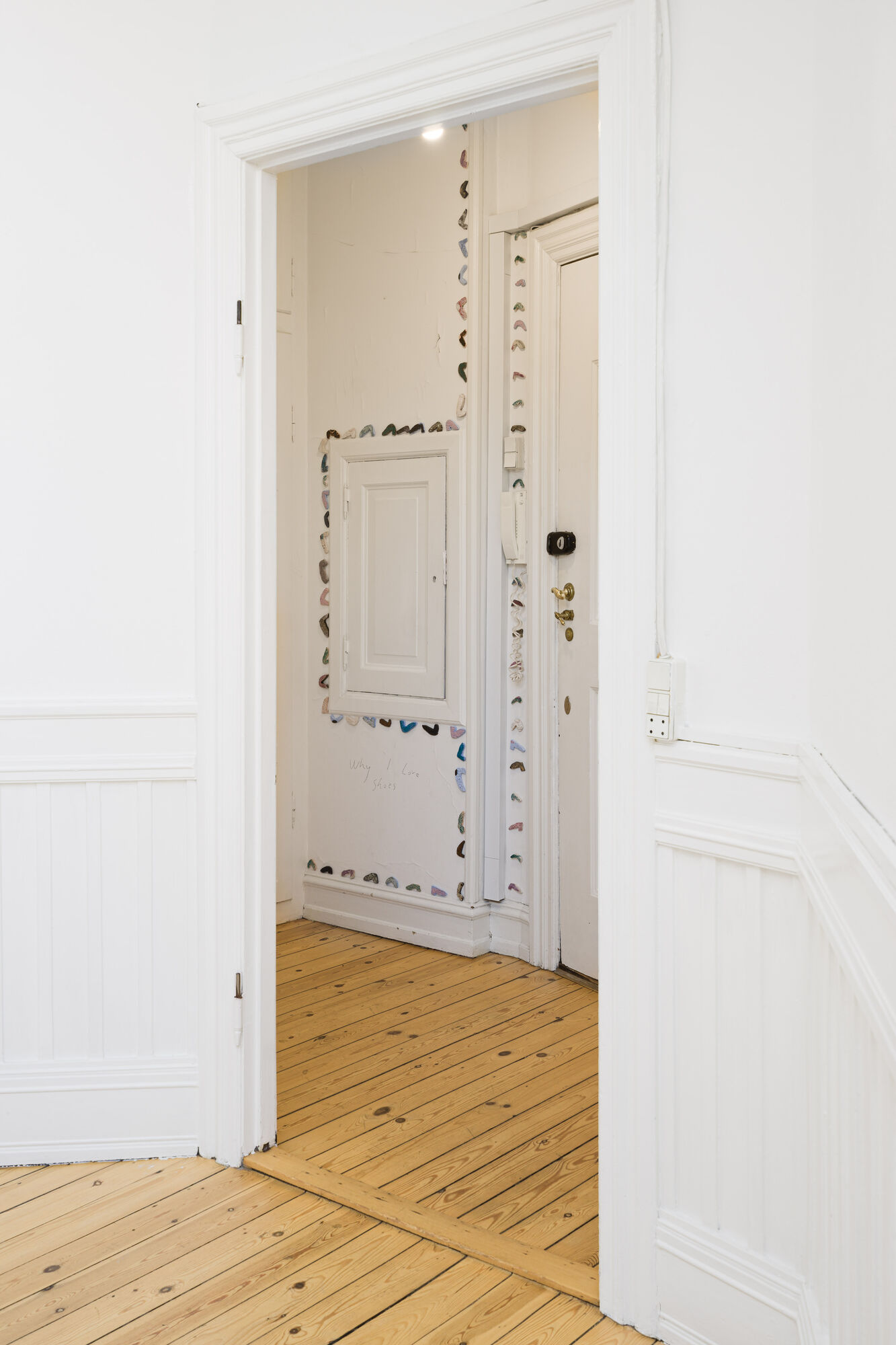
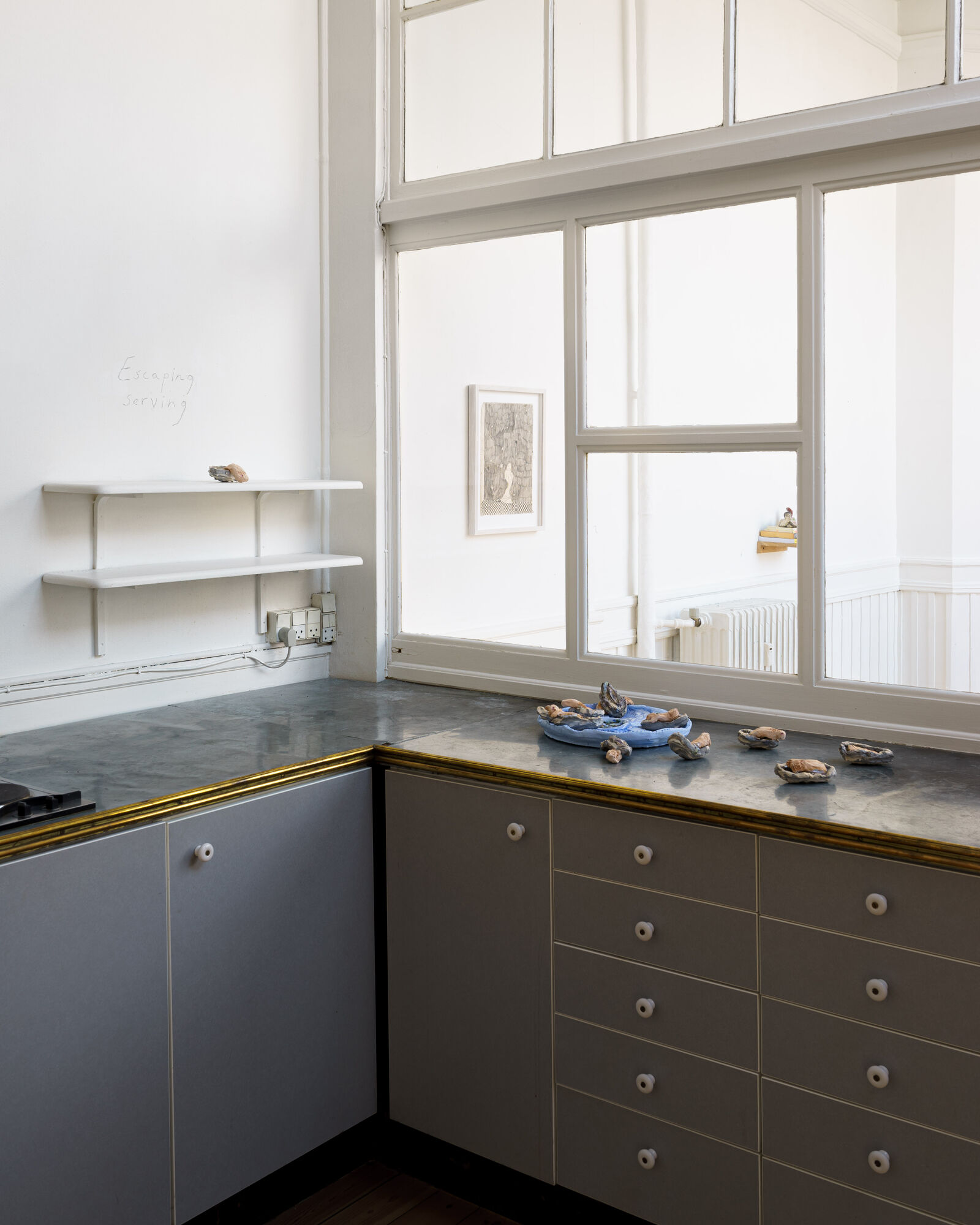
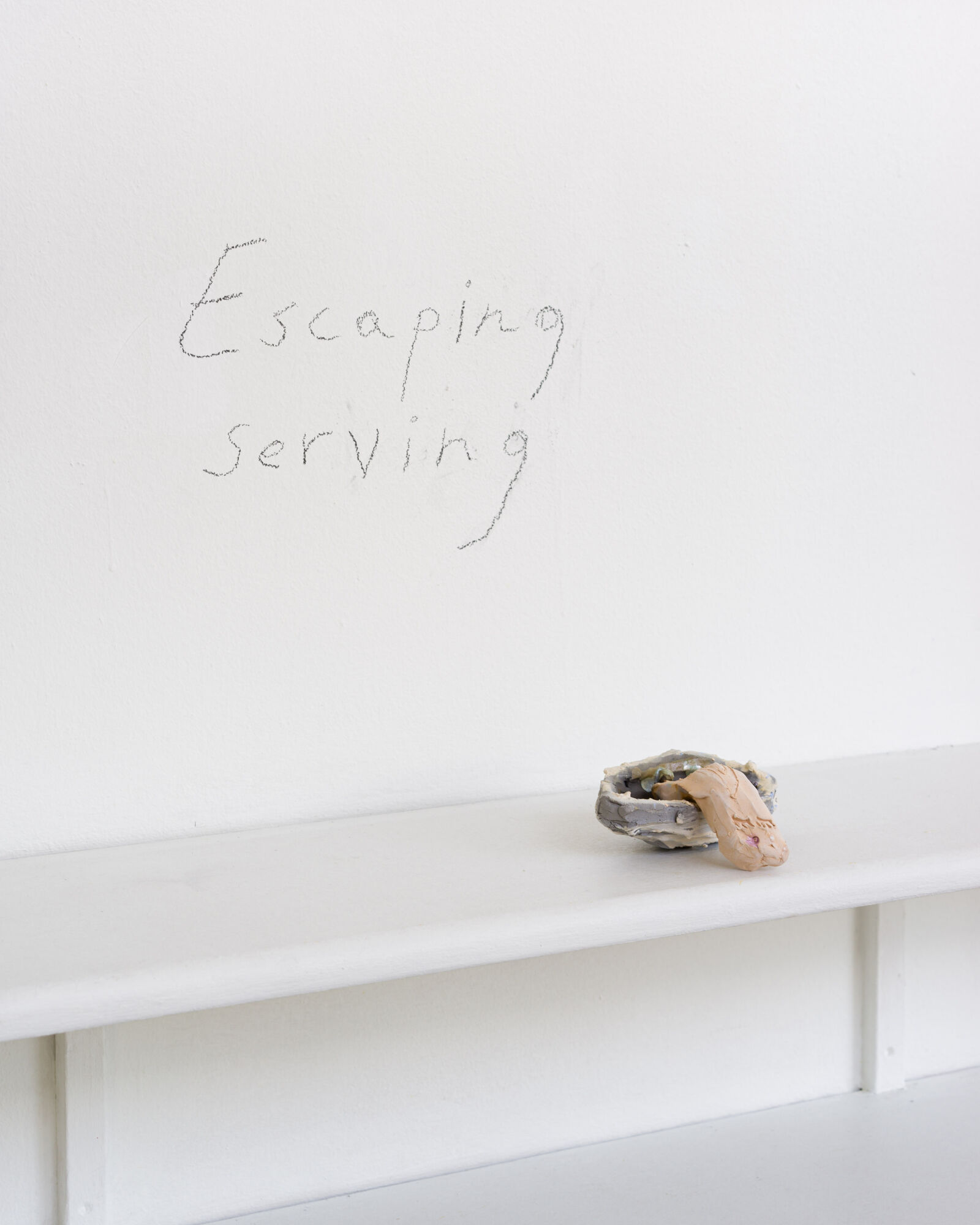
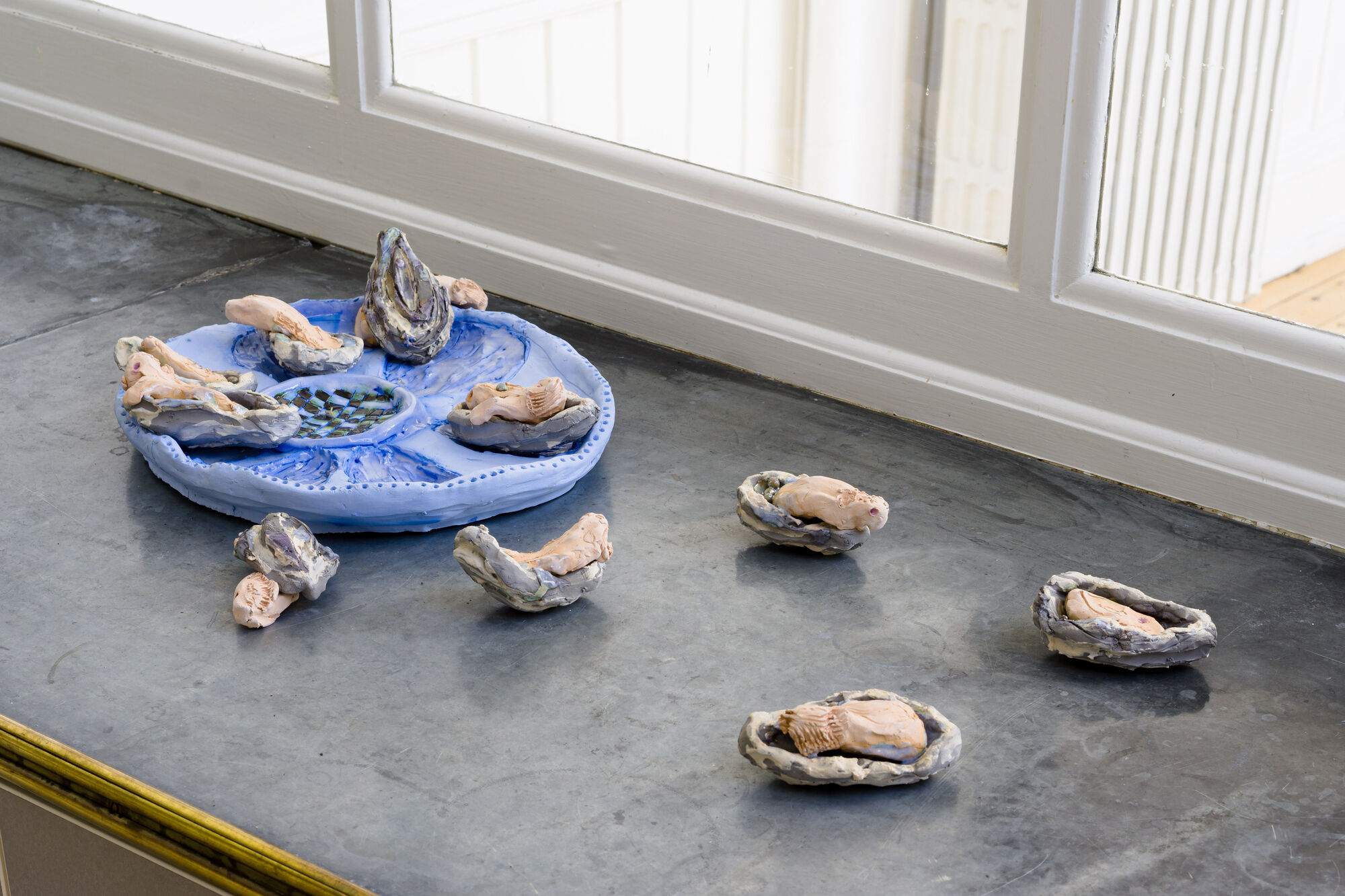
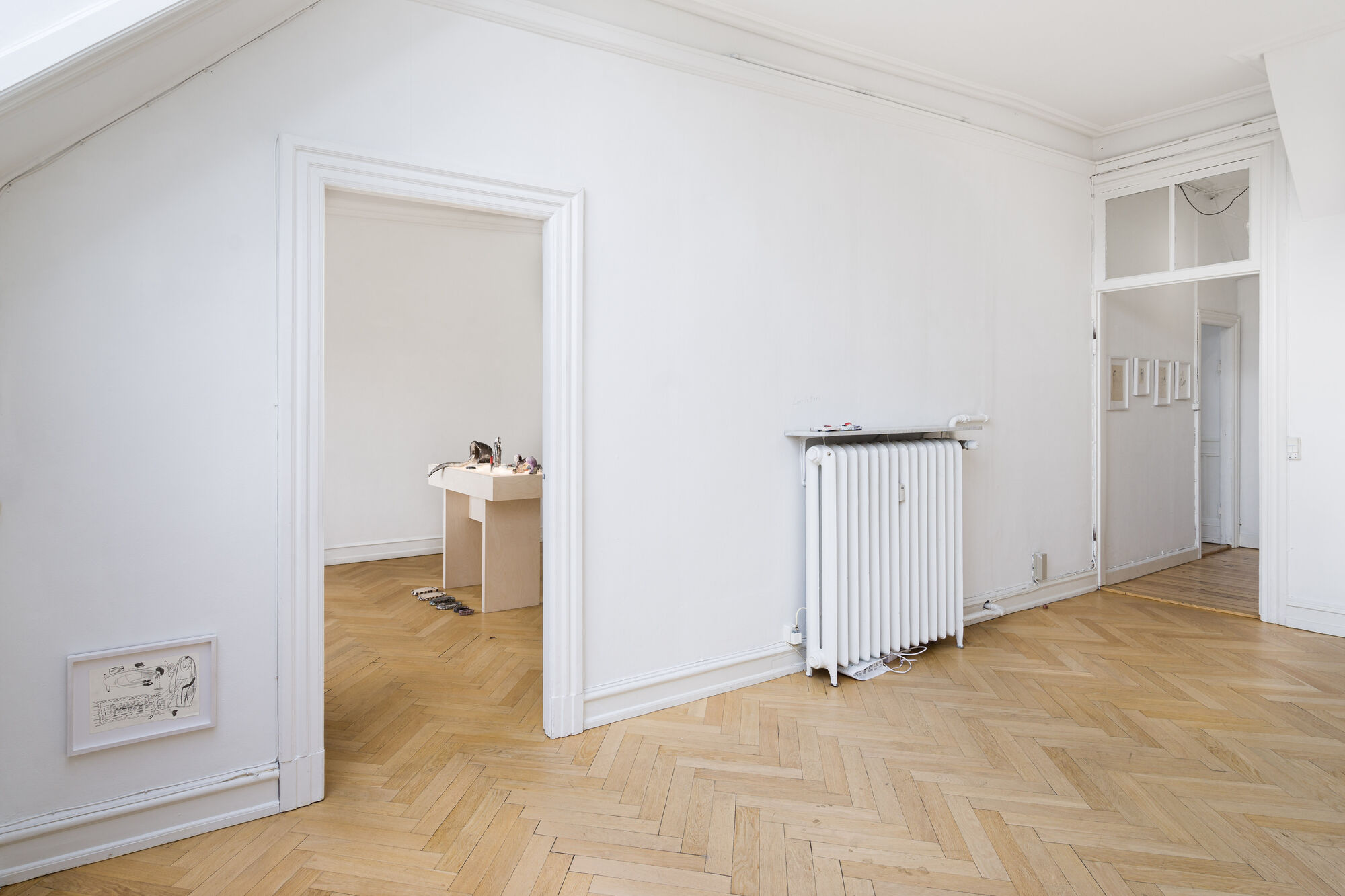
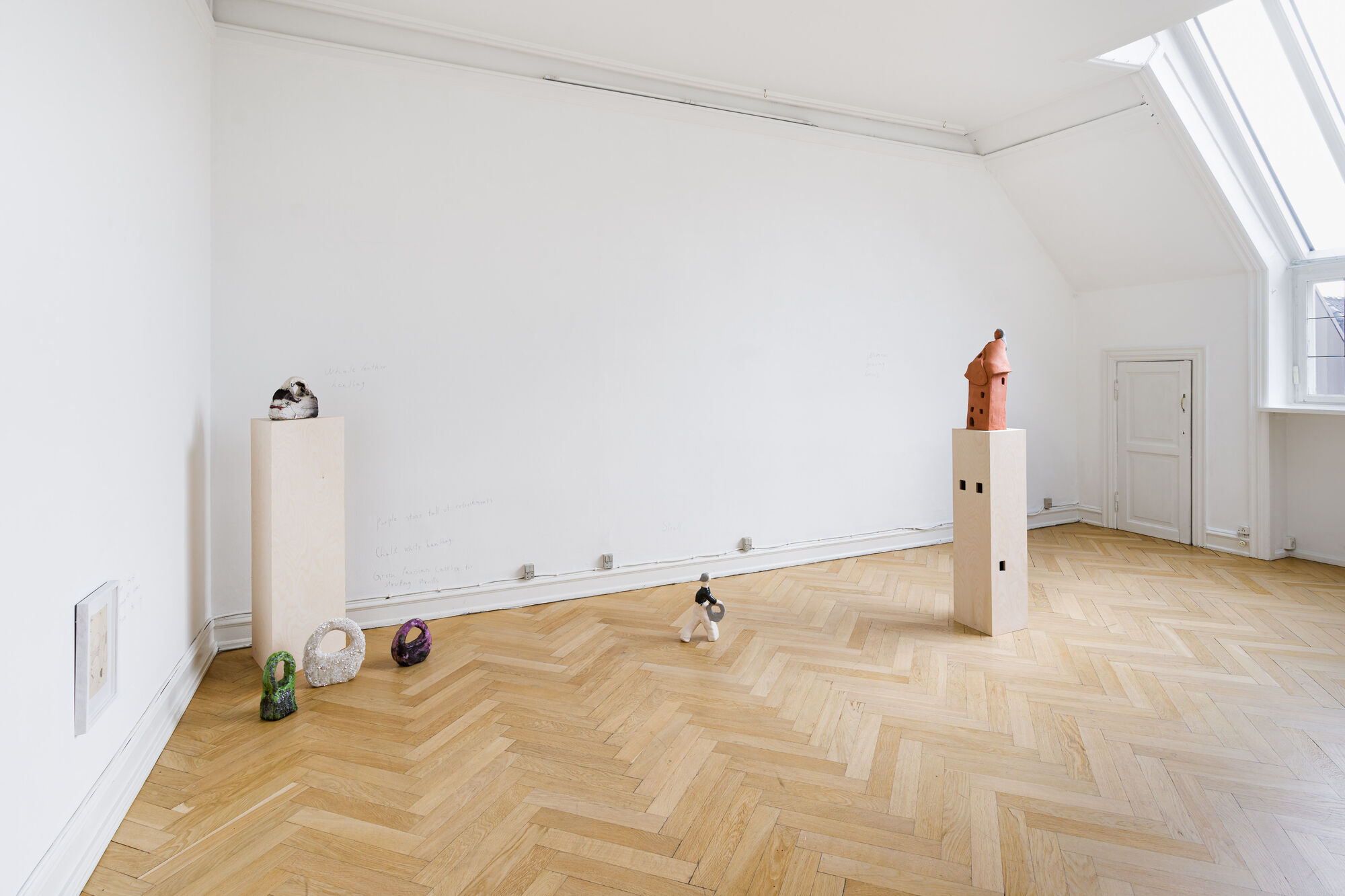
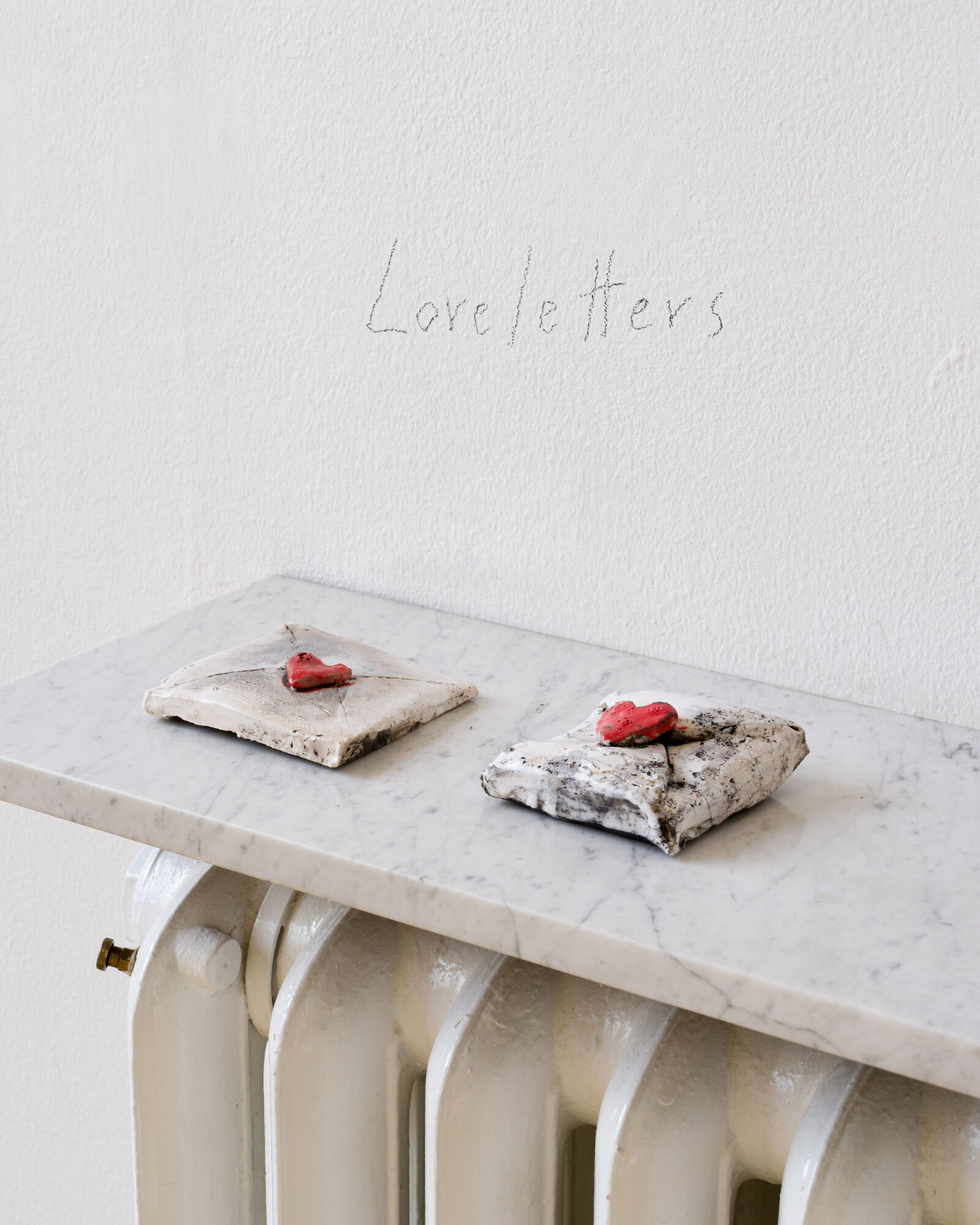


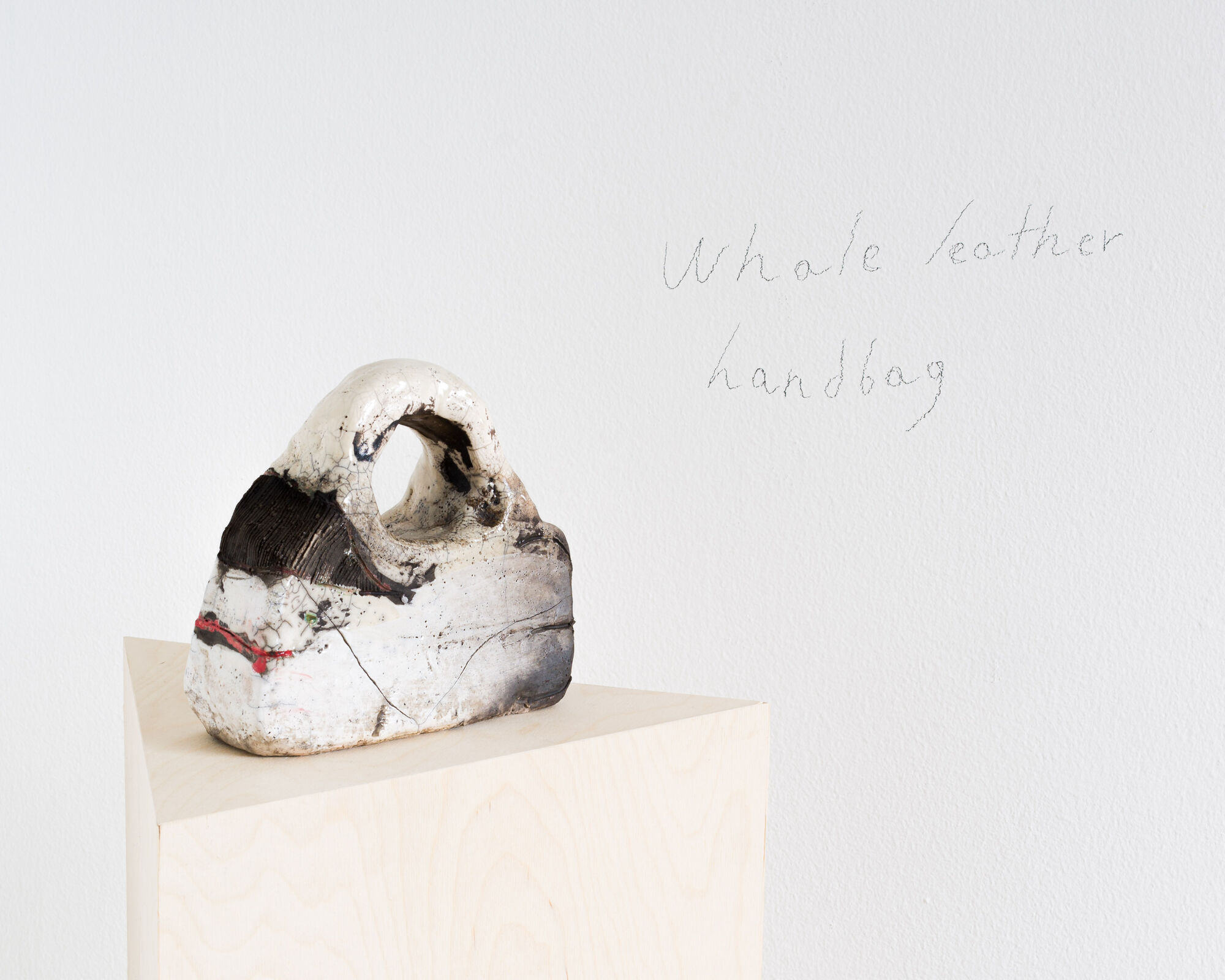

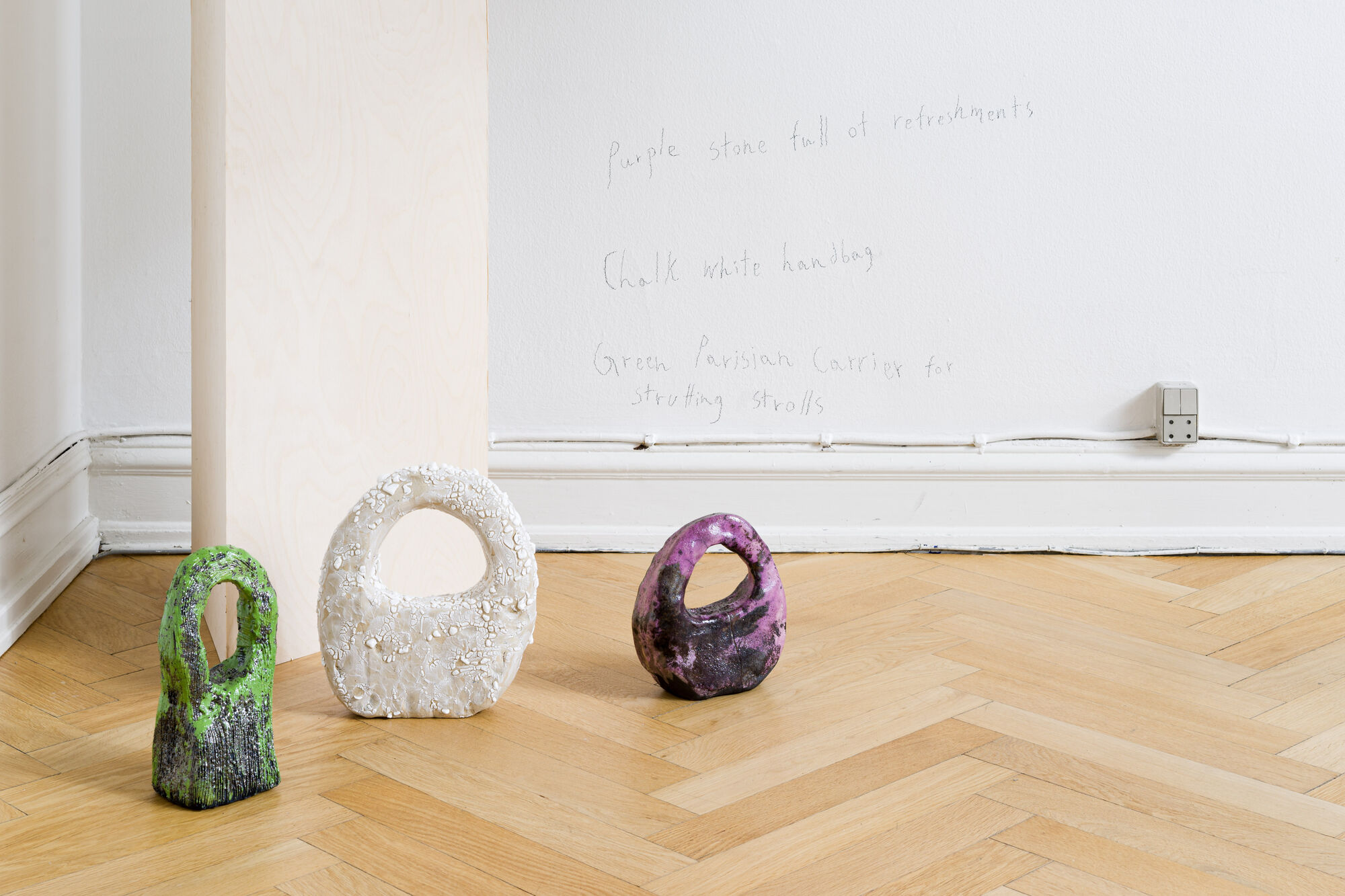
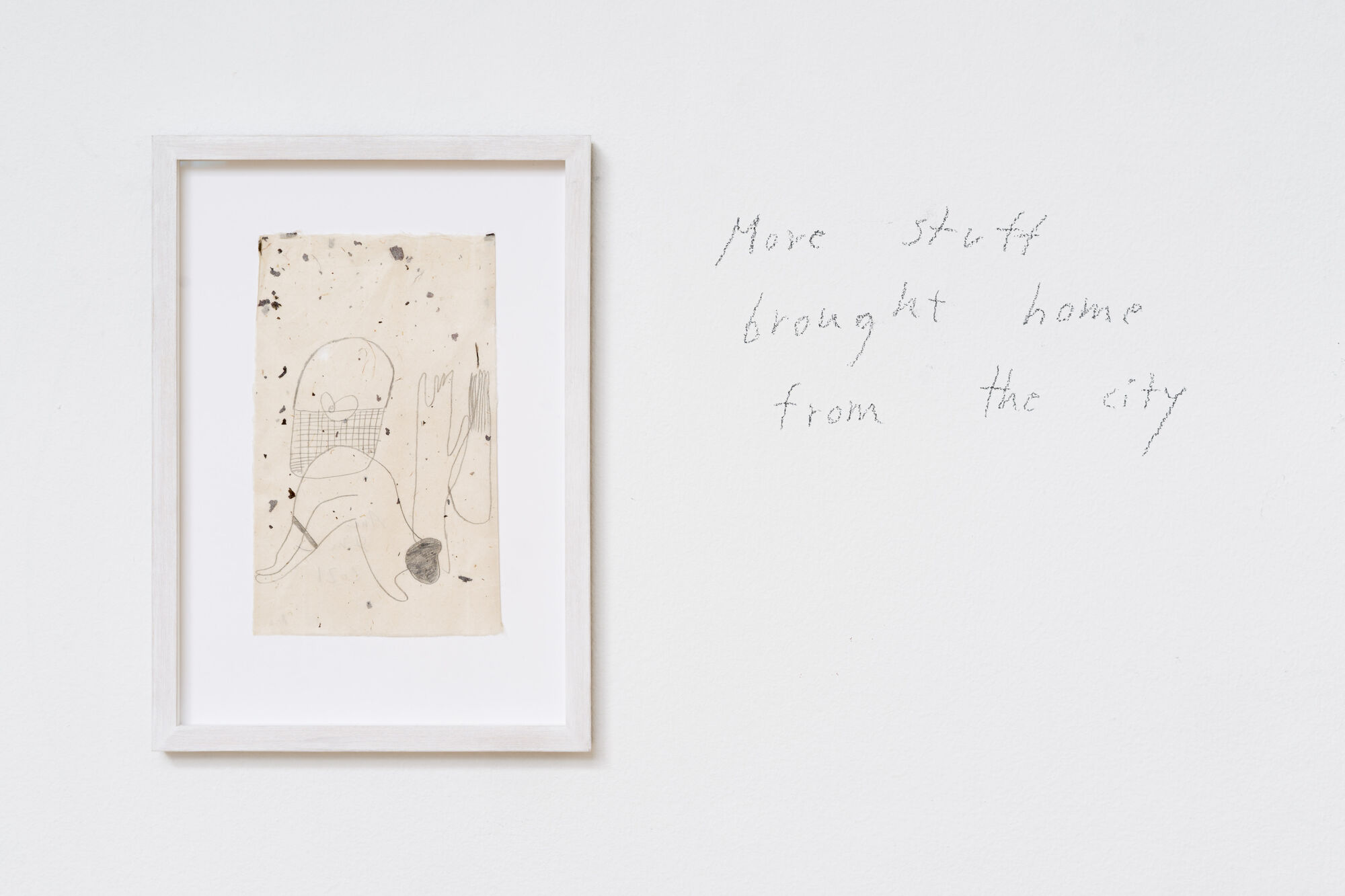
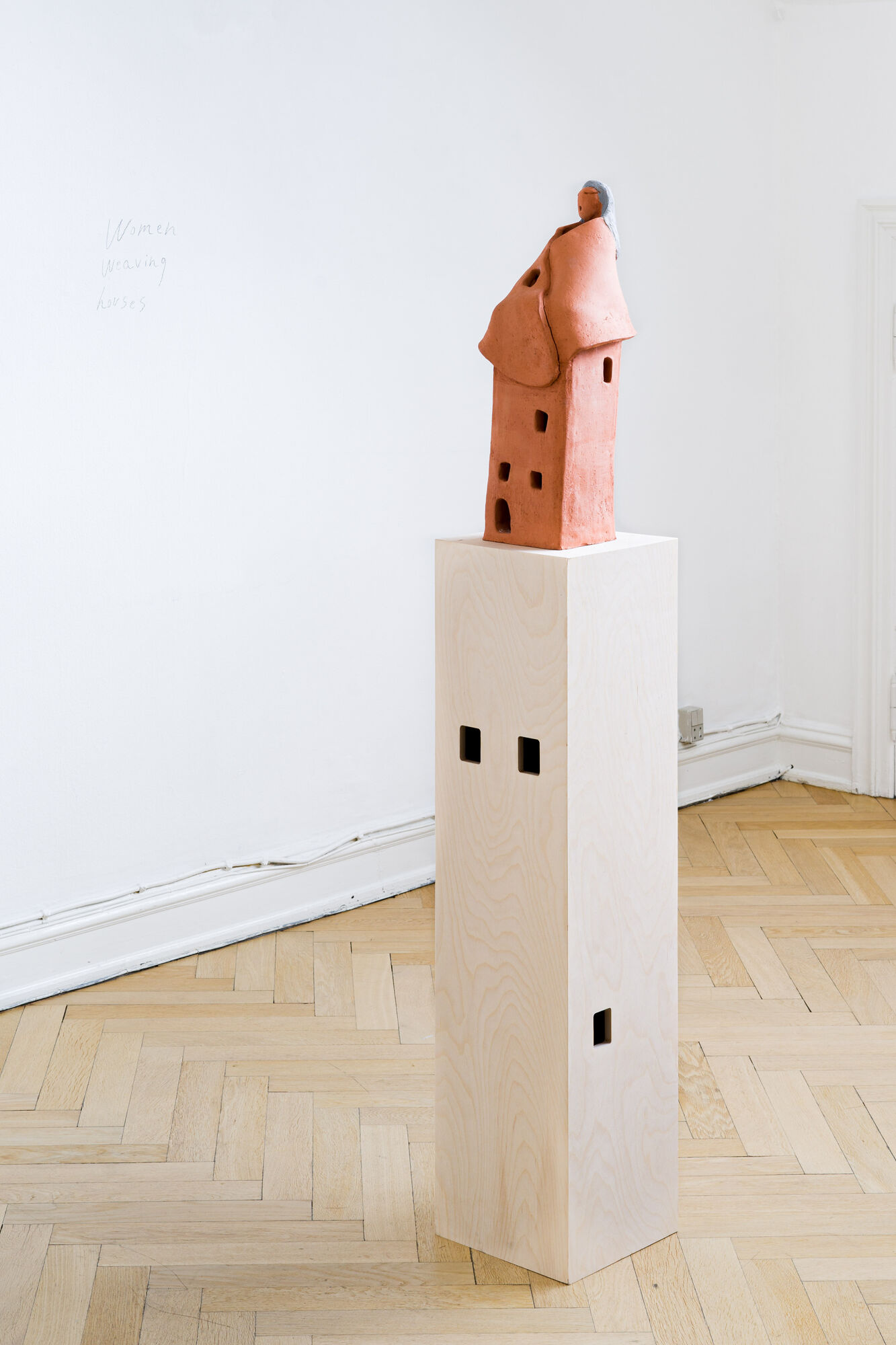
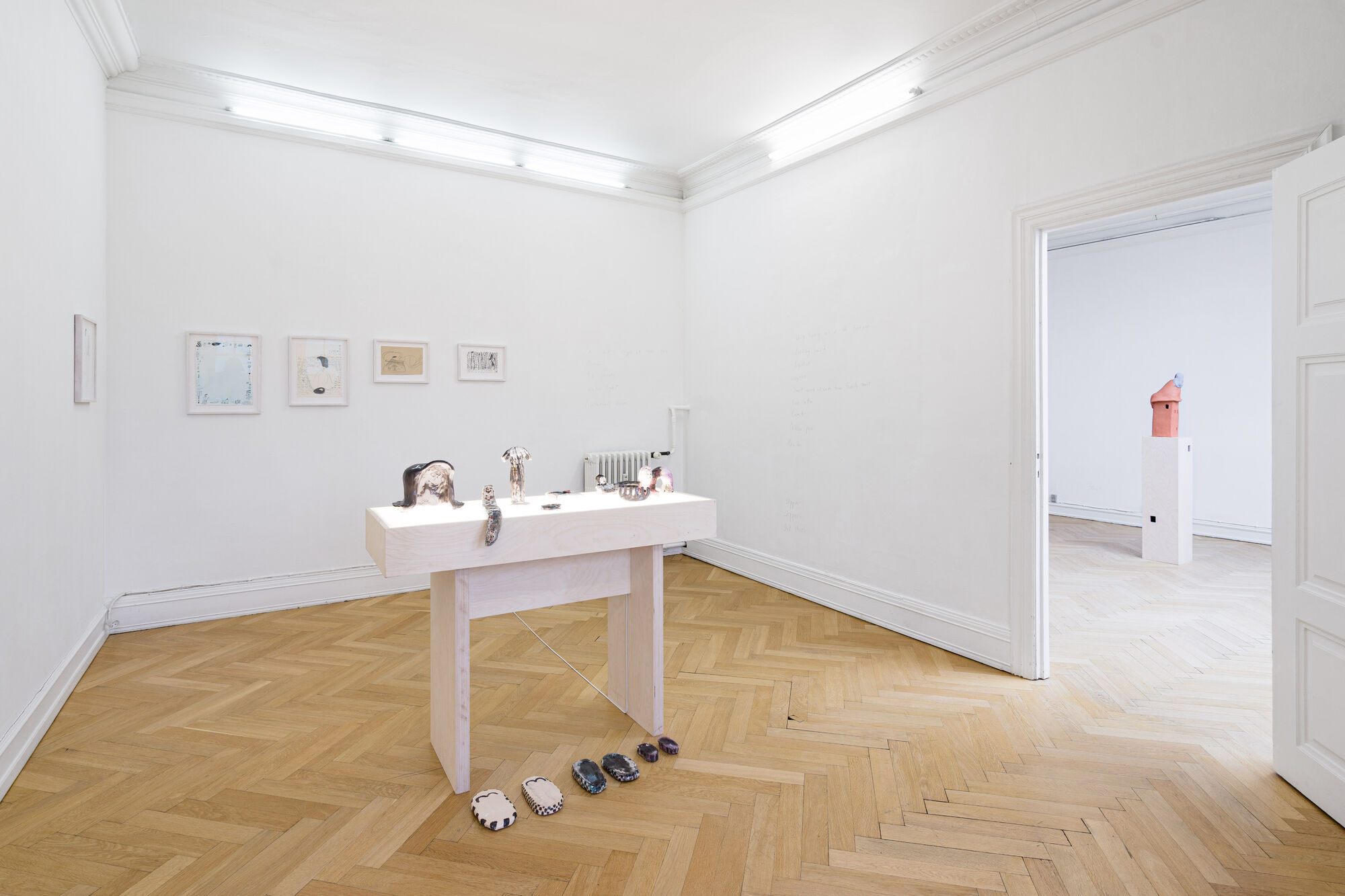
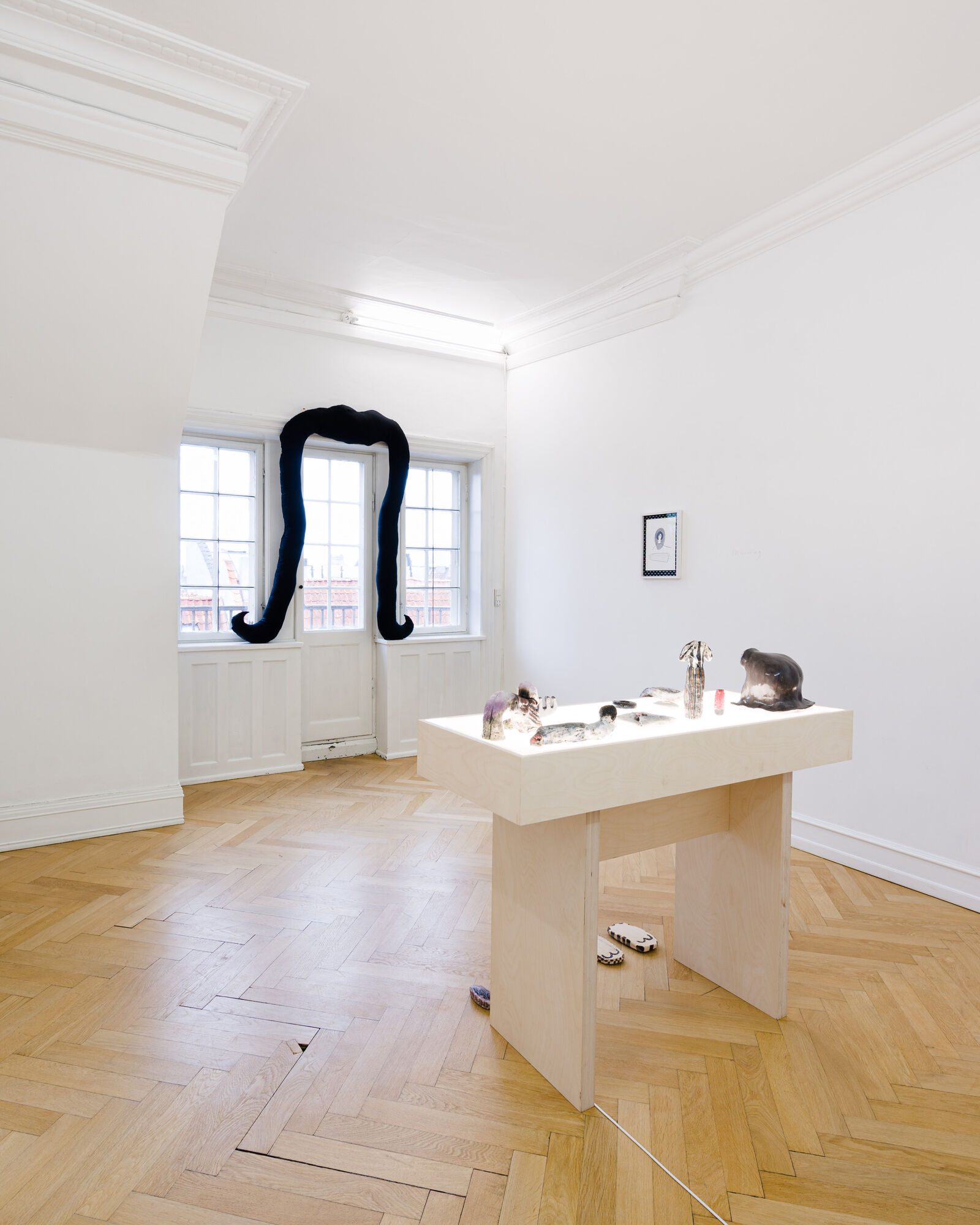
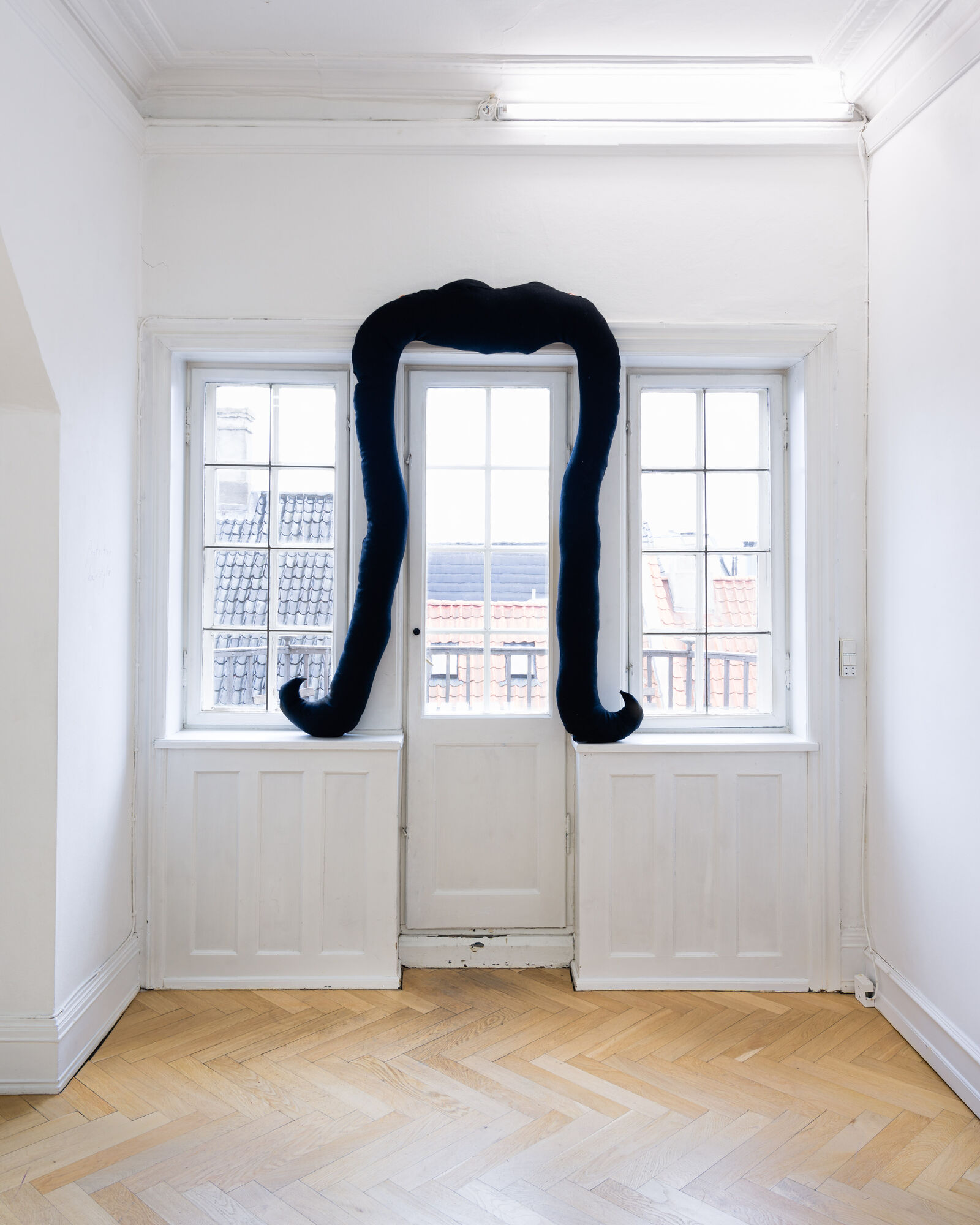
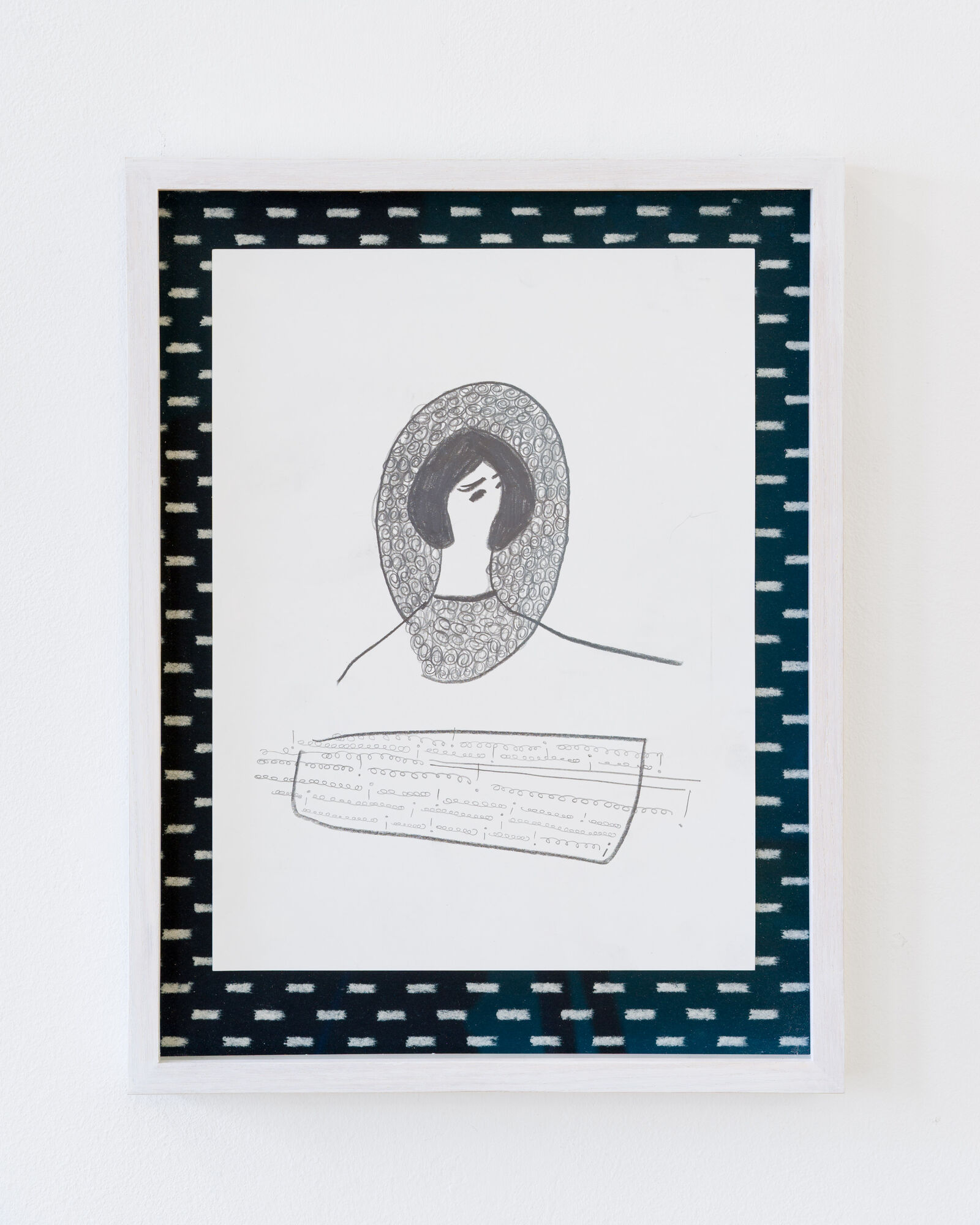

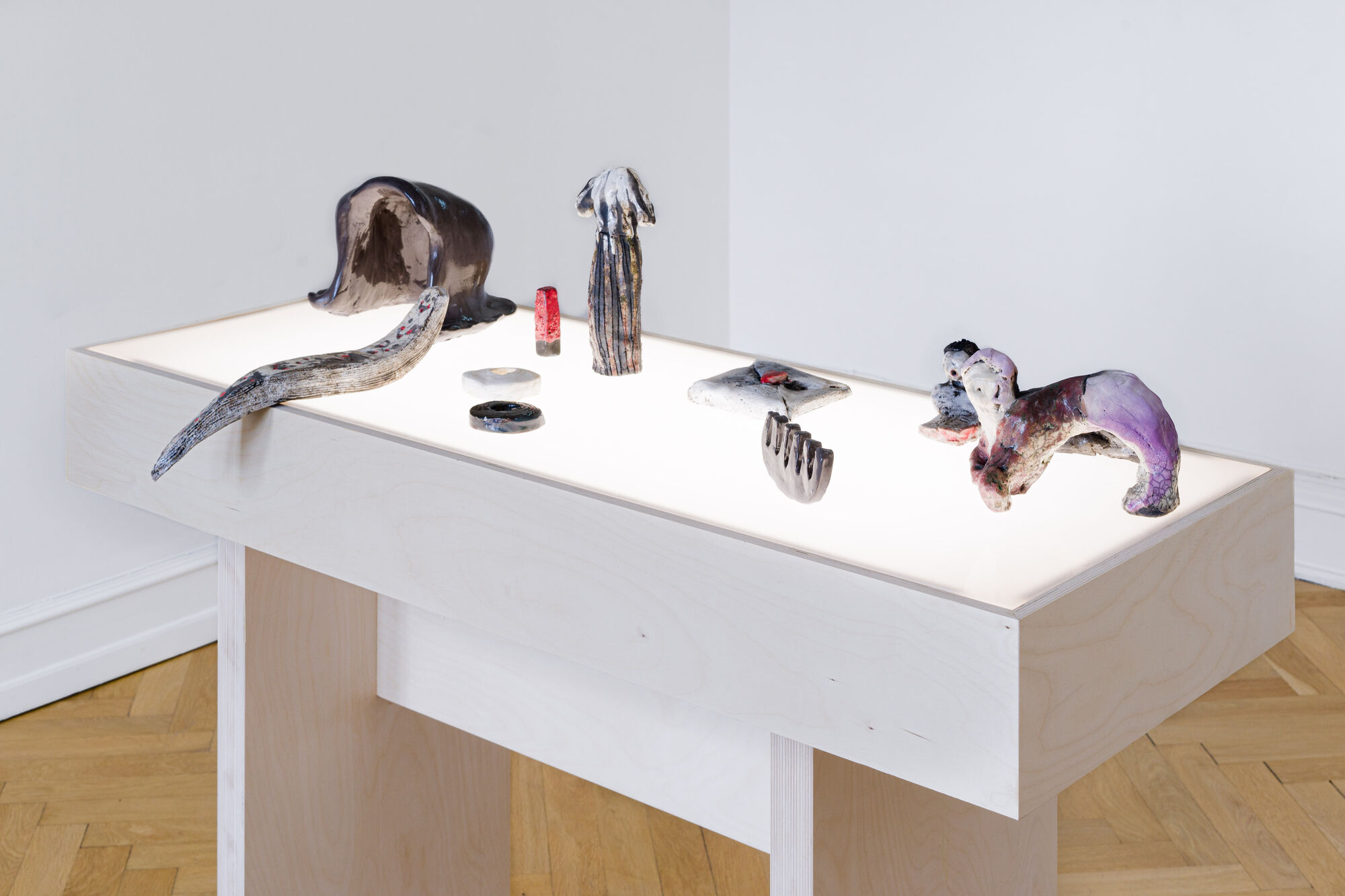
Photos by Brian Kure